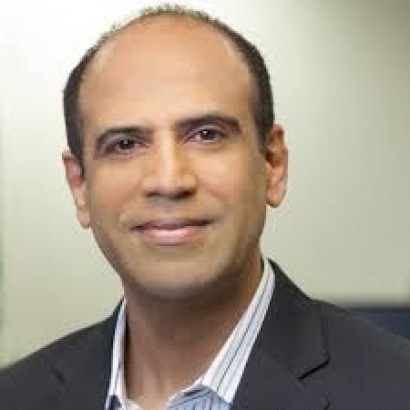
Each year, the U.S. economy loses more than $160 billion to unplanned power outages, even after utilities implement an outage management system under normal operating and external conditions. To help resolve this situation, Space-Time Insight has partnered with OMNETRIC Group to deliver next-generation outage management solutions to utilities in North America. OMNETRIC, a joint venture between Siemens and Accenture, develops and delivers integrated smart grid solutions for greater grid reliability and efficiency. Together, Space-Time and OMNETRIC help utilities achieve better awareness, improved assessment and better preparedness for power outages through predictive analytics and continuous process improvement.
REM talked to Ajay Madwesh, Vice President of Space-Time Insight’s Utilities Business Unit to find out more.
Can you tell me more about Space-Time Insight and about OMNETRIC Group that you’ve partnered with?
Space-Time Insight specialises in delivering advanced analytics, especially on the operational and IT side. With the plethora of data coming in to utilities, there needs to be a means of making sense of all that, but it also has to integrate with the operations side of the utility. That’s where this partnership comes in. We are a premiere analytics company providing new credence to analytics and succinct presentation of the analytics by designing software applications focused on analytics. OMNETRIC is a joint venture between Accenture and Siemens primarily focusing on the operational side of the business, meaning they worry about the operational systems such as energy management and outage intelligence systems. They also provide the integration services to end user clients, whether they are on Siemens systems or not.
Just how big is the US outage problem at the moment and is it likely to get worse?
When you think about utilities, whether electric, water or gas, one of the single largest issues is an outage. Outages lead to lost revenue and regulators are pushing utilities to improve performance of their networks because of this. The issue is actually quite global in that the existing systems, the outage management systems and advanced distribution management systems and so on, were designed for a very specific scope of solutions. Momentary and large scale outages can occur due to power systems faults, imbalance or external impacts. An EEI study indicates that the impact due to storms on network performance has increased over the last 10 years. The need is to provide better analysis and prediction to customers to manage their network better.
For example, knowing that a storm is coming and knowing which feeder has the highest failure propensity is an extremely important need. This is a really important subject that is not being addressed today by the traditional outage management systems. You need very deep analytical models to understand and predict that this particular portion of the network, among all the other ones, is the most likely to fail. So we’ve focused on supplementing and augmenting these existing systems to also provide the forecast of what may happen as a result of storm or fire or flood or any similar issues that would lead to failure of these systems.
How effective have utility outage management systems been thus far in helping to solve the problem?
Outage management systems are still crucial to manage an outage from preparation of switch orders, to crew dispatch and closure once the outage has been identified. Our focus is to identify an outage or the likelihood of one occurring before a customer calls in. Outage Intelligence, combined with OMENTRIC’s operational knowledge, provides a broader perspective beyond outage management systems because it is looking at geospatial, temporal (time based) and network characteristics and data. As an example, weather and fires or seismic events are spatial in nature. To manage outages better, a utility needs to augment an outage management system to understand and respond to the full context of the problem.
What kind of savings can be made using this technology?
By using SAIDI information available from the U.S. Dept. of Energy, plus the department’s online Interruption Cost Estimate Calculator, we can see that for many utilities a 10 percent reduction in SAIDI score can lead to annual savings of more than $1 million. SAIDI is highly variable among utilities, so it’s hard to give an exact savings that every utility can expect from improved outage analytics.
How and where is this type of technology mostly being deployed? Are there customers that are higher priority than others?
Certainly utilities that are subjected to extreme weather events—hurricanes, tornadoes, floods, snow storms—can benefit from solutions that help reduce outages. Because we’re heavily focused on analytics, this type of technology is being deployed at utilities that need to plan ahead for the next big weather event. Think about hurricane planning in Florida, tornado planning in Oklahoma, snow storm planning in Chicago. Also, this technology benefits from access to multiple sources of data, so utilities that have deployed smart meters see a bigger benefit. But that’s not to say that utilities without smart meters and extreme weather can’t benefit from outage analytics, as well.
How will this be developed in the future?
It is important to emphasize that we are not an outage management system but a layer above that, with a much broader perspective. We are working with OMNETRIC to offer ongoing analytics and process improvement in outage detection and management. By layering analytics on top of systems and processes that a utility already uses, we add the ability to make better decisions quickly and with confidence. As extreme weather and smart meters become more prevalent, you’ll see more utilities applying data and analytics to reducing outage frequency and severity.

